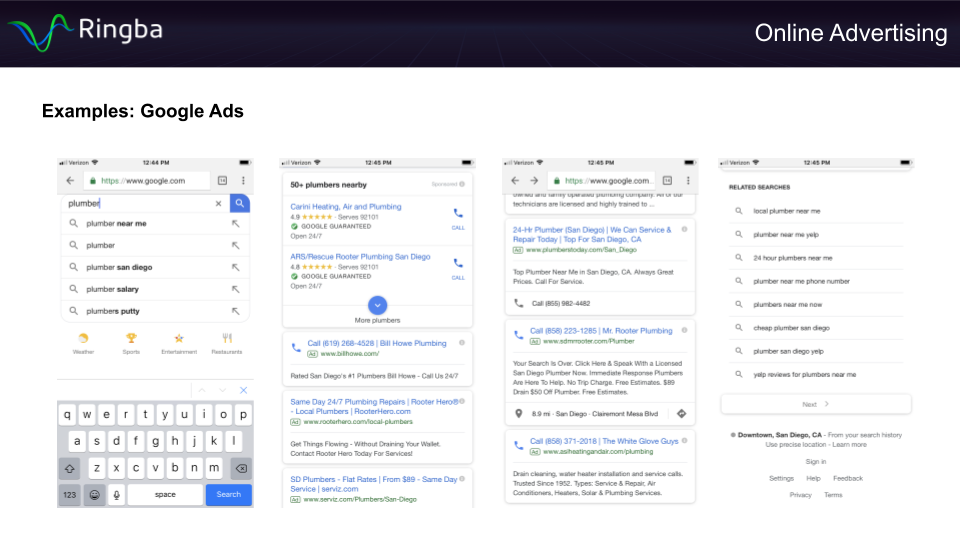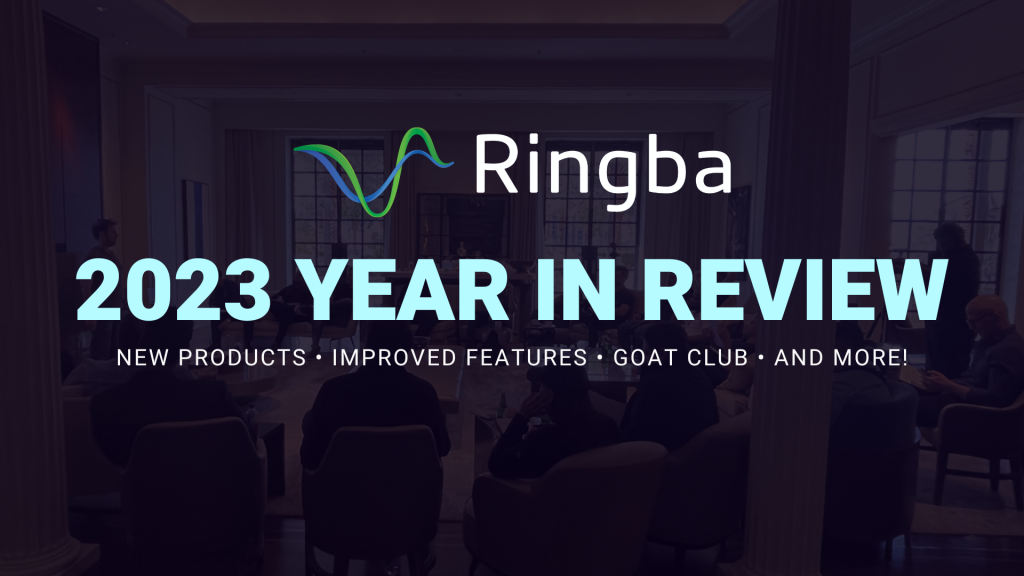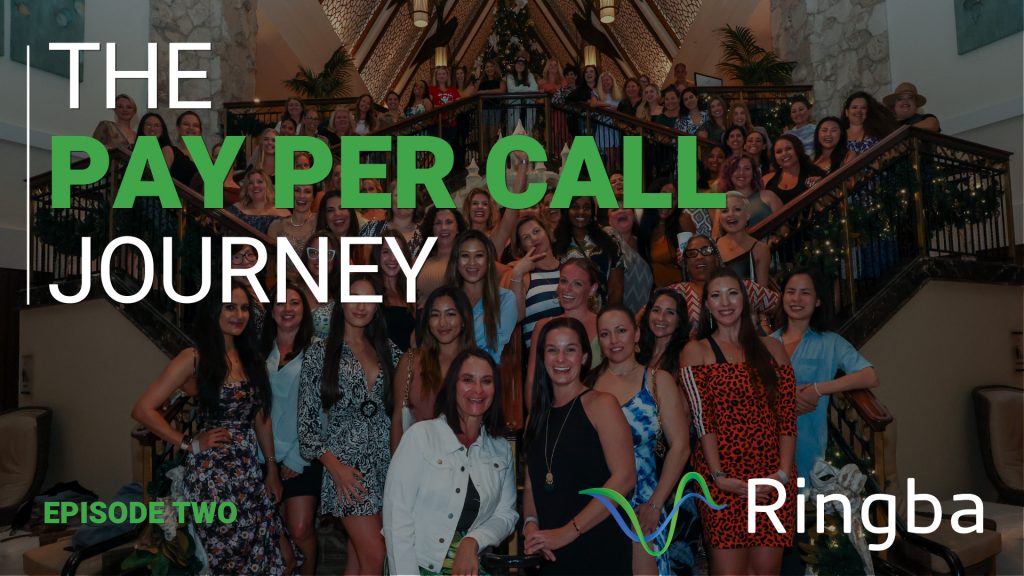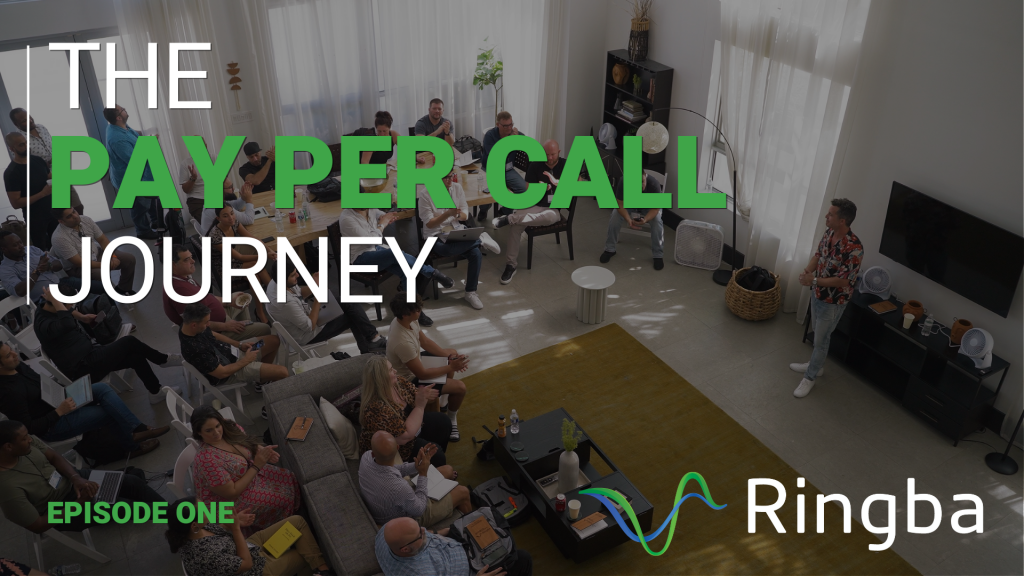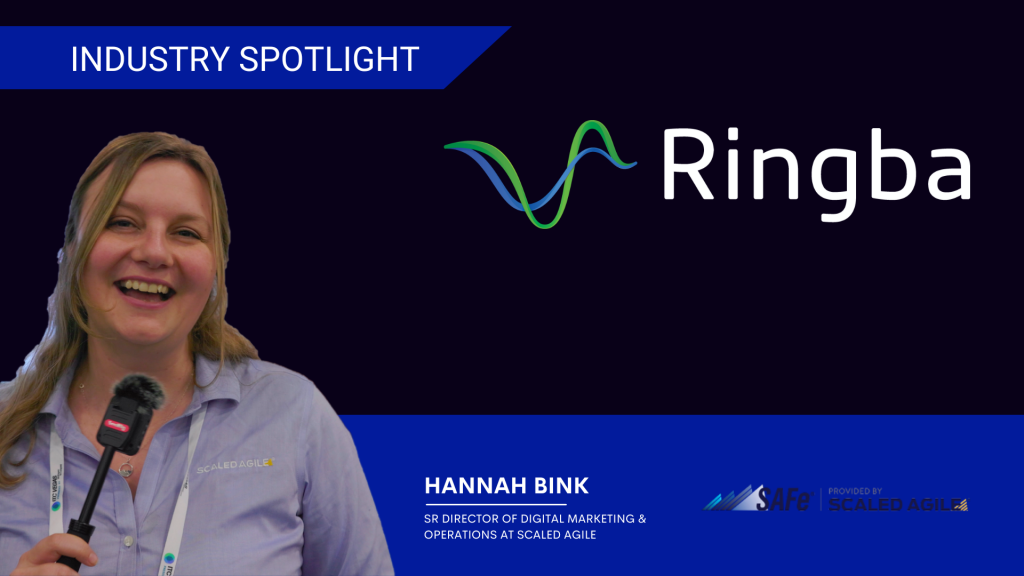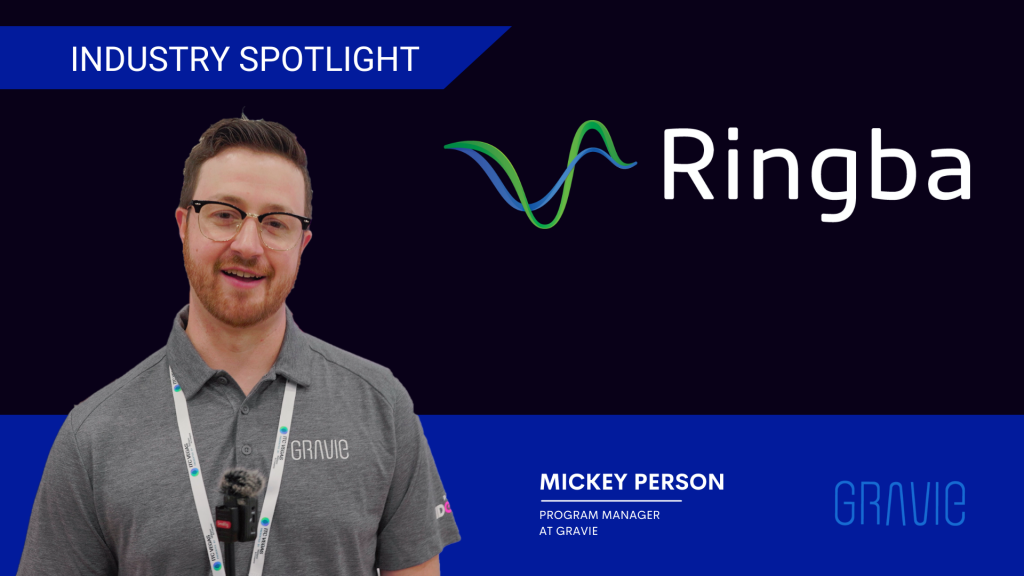Learn the best online advertising methods and traffic sources for generating inbound calls to your campaigns.
Contents:.
– About Online Advertising for Pay Per Call
– Pros and Cons of Online Advertising
– How Online Advertising Works
– How Click-to-Call Works
– Types of Online Advertising
– Paid Search Advertising for Pay Per Call
– Paid Search: Google Ads
– Paid Social Advertising for Pay Per Call
– Native Advertising for Pay Per Call
– Mobile Push Advertising for Pay Per Call
– Email Advertising for Pay Per Call
– Contextual Traffic for Pay Per Call
– SEO and Organic Traffic for Pay Per Call
– Examples from Call-Only Google Ads
About Online Advertising for Pay Per Call
Online advertising is massive. Global spending in 2018 was estimated to be at $628 billion. Now, there are two major, major players that dominate the global ad market. That’s Google, with their Google Ads, formerly AdWords product in their content network, and Facebook. Google occupies 37.2% of the global advertising market. Facebook is just under 20 with 19.6%. Now, that means there are tens, and hundreds of billions of dollars of ad spend that’s going on through these platforms. There’s virtually an unlimited amount of opportunity for people, regardless of what they’re trying to advertise.
Pros and Cons of Online Advertising
There are pros and cons of advertising online for pay per call. The most powerful thing about advertising online for pay per call is it’s the fastest way to get started. Now, you can make millions of dollars advertising in print, or out-of-home, or on television, or radio. But it’s going to take a lot more capital up front. It’s going to take you a lot more time to get started. By far, pay per call is easiest to get started with through online advertising.
Pros:
Regardless of whether it’s pay per call or not, is that you can quickly test an infinite number of advertising combinations. That means different copy, different landing pages, different targeting, and an endless array of combinations to try and figure out what’s going to be profitable for your campaigns. It’s also pretty cheap and easy to get started with online advertising, whether you’re going to use social or search, or whatever. You can start pretty cheaply. A few dollars, $50, $100. Whatever it is, just about anybody can afford to test a little bit.
No one can hide what they’re doing. All the advertisements are available if you want to look for them. It’s super easy to find examples of people that are winning. When you see an example of someone who’s winning, you can use the same type of funnel, similar ad copy, similar campaigns. Then compete with them, or find your own angles to do the same thing. That’s why I don’t buy it when they say that they can’t make campaigns work because the answers are right there in front of you, you have to look, do your research, and do a bunch of testing.
With online, there are virtually unlimited amounts of inventory available. What I mean by that is you will never be able to buy all of the available ad space on the internet. It’s just not possible. The wealthiest person in the world and most governments cannot afford to buy all advertising inventory that’s available online. It’s a virtually endless field of opportunity for you to run campaigns. The people who fail at online marketing, they’re just the ones that don’t put enough work in to educate themselves and don’t put enough work in to test their campaigns and keep trying until they win. That’s the only reason you will not succeed in digital marketing, or as an affiliate, simply if you’re not willing to put the time effort in to learn and figure your campaigns out. Because there’s an unlimited opportunity, and an unlimited number of campaigns you can try. It’s like an endless amount of combinations, so if you dedicate yourself to it, you can be successful.. Anyone that tells you otherwise is just full of crap and probably makes a lot of excuses in their life.
Cons:
It’s highly competitive. The bigger your campaign is, the more likely that people will see it and then rip it off. That’s one of the downsides to advertising online. But the great part about pay per call is it’s much harder to rip off a campaign because humans are required to answer the phone. By creating great strong relationships with your buyers, you’re going to be able to build a moat around your business. While it is still highly competitive, it’s going to be a lot harder for people to find a similar campaign and steal your advertising. That’s why I like pay per call. It requires more work. But at the same time, it’s got a lot more longevity built into it.
People who lack creativity cluster to the obvious traffic sources. If you’re doing search advertising, and you have four keywords that you’re trying to optimize, like “plumbers,” there’s gonna be a tremendous amount of competition there. Because those people who don’t know how to be creative and find unique ways to advertise their business are just going to cluster around what they think is the known easy way. That creates a lot of competition around the easy wins. You’re not likely to find a lot of them. You’re going to be competing with a lot of people. It’s going to be easy to find. You have to get super creative. That’s also a pro, in my mind because if I’m able to be creative and other people aren’t, that gives me a competitive advantage. But it requires a lot of work, so you have to be willing to work.
Gaining competitive advantage on the internet can be complicated, especially if you’re coming from affiliate campaigns, where people are just primarily looking around for traffic sources, stealing ads, and running the same campaigns. You’re competing with people that can only steal from you, and you have no competitive advantage, so it’s hard to build a campaign. Well, that is true in some areas of pay per call. But because of the way pay per call functions, you can create long term competitive advantage that other people can’t just walk in and take from you. That’s why I think this is an exciting opportunity, and why I think there’s an endless amount of growth that can happen, and why I also feel it’s worth the investment because not everyone can take it away from you.
Another con of online advertising is, easy wins rarely last long. Because other people will see them and copy them, they’re hard to find. They don’t last long. That’s why I think pay per call is a better space than the standard affiliate space because it requires a lot of work, so fewer people are going to be willing to do it.
One con is the same thing we said was a pro, but it’s that virtually unlimited inventory is available. That’s also a problem. It’s an endless opportunity. But it also means that you can go in so many directions you may not be able to figure out how. That’s why I teach in this course that you should pick a few different verticals and focus all your energy on it like a laser, instead of like a light bulb so that you can find some wins in some spaces and then can eventually branch out. But having an unlimited opportunity is also overwhelming for people, and they don’t exactly know where to start. I’m sure some of you are wondering that same thing. Like, “Where am I gonna start? I can do so many different things.” The key is one foot in front of the other. Pick a vertical. Focus on it, and so you can learn enough to win, and then move on to some different verticals. If you can conquer one, you can capture them all using that same process.
How Online Advertising Works
The first thing we need to do is find a buyer or a campaign to run. We can go to websites to find pay per call networks. Contact them, get your accounts. You could reach out to call centers and see if they’re buying. You can go to trade shows, meet buyers. Whatever you’re going to do, you need to find some campaign to run. Maybe you’re a call center owner, and you have your own campaign. It all applies precisely the same way.
Once you have your campaign to run, you’re going to choose your traffic sources. We’re going to talk about all the traffic sources in this lesson. But you need to choose one or two of those traffic sources and focus your energy on figuring them out. Now, as one of the owners of a more prominent platform in the pay per call space, I have some transparency into what’s working. I have a news flash for you guys. Everything is working. Everything I talk about inside this lesson, we have customers that are making millions of dollars on these traffic sources.
Once we have all those materials in place, we’re going to set up our call tracking. Because if you’re not using your own call tracking, you’re going to have a tough time winning. You’re going to have a hard time making millions of dollars. I want to reiterate that there is no one I know who is successful in pay per call, that isn’t using their own call tracking platform. Because if you can’t load balance your calls across multiple buyers and do all your source attribution, you can’t optimize either end of the funnel. I don’t care if other classes or pay per call networks, or whoever it is, is telling you, “Oh, you can use our phone numbers. You don’t need your own call tracking.” Well, anyone who tells you that, okay, is trying to box you in so that you don’t have control over your campaigns, and then that means you can’t leave them.
Once you have your call tracking, create your advertising campaign. You’re going to set up your campaign in Google or Facebook or whatever it is. Then you’re going to create lots and lots and lots of tests. I like to create at least 250 multivariate tests of just the ads, to see what gets the highest click-through rate. Some people are saying, “Well, that takes a lot of work.” Yeah. Damn right, it does! But when I win, I win big. The more you’re willing to test, and the more creatives you’re eager to put together, the more likely you are to succeed.
Create even more tests. Once you understand what type of advertisement is working for you, you should create an additional 250, 500, or 1000 advertising combinations to figure out what gets the highest click-through rate because it doesn’t matter what platform you’re using. Whatever gets the highest click-through rate is what the platform is going to optimize for. It makes Facebook the most money. It makes Google the most money. The signals to them that users want whatever you’re selling.
The only way to figure out what ads have the highest click-through rate is to test the heck out of a large number of combinations. That’s the grind. It’s not glamorous. A lot of affiliates don’t talk about it because they don’t do it. But realistically speaking, you need to do it. I still remember at the beginning of Facebook ads, like 15 years ago, I’m in my parent’s basement, grinding thousands and thousands and thousands of ads. I made a ton of money. Because once you find what works, you can scale it. But the only way to figure that out is to test, test, test, test, test. It’s about how much work you put in.
You’re never going to stop creating tests. Ever. Once you find something that’s profitable and wins, you’re not done. Some people are done when they do that. They’re like, “Oh, I got my campaign. It’s running. I’m making money. Awesome.” Great. Good for you. Something’s going to take it away from you if you don’t keep working. Once you find a winning combination, you just got started. Now you need to test different angles, different landing pages, work on different buyers. You are never done testing. That’s rule number one of performance marketing, is the testing never stops. You don’t finish. You test throughout your entire career, forever.
You’re going to monitor relentlessly. You see people refreshing stats. Yeah. It gets addicting. You want to refresh your stats. You get to see the money coming in in real time, and when you’re making money, it’s a lot of fun. Don’t get caught up so much in the cool part about the making money. Get caught up in the details. What ads are working? How can you optimize them? What buyers are working? Listen to your phone calls. Review every detail about everything you possibly can, until you know it intimately. Then never stop that process. The more you pay attention to the details, the more you can raise your margins. When your margins are higher, you can spend more money on advertising, which creates a competitive advantage. You can own verticals.
You’re always going to review your results. You’re going to review them daily, hourly, to the minute. If you’re spending $25,000 a day on media, you’ve got someone watching your campaigns all day. Because they can turn, they can change, there could be technical issues. You never know when a call center is going to go down. They may not even tell you they’ve gone down because a lot of them are crappy. Or if you’re going through brokers or networks, the call center may say to them, may take them two hours to tell you, and you could be burning money. You need to be continually monitoring and continually reviewing. That’s why you need your own call tracking. Because if a network’s buyer goes down, and you can’t reroute your calls because their phone number is on your ads, well you’re just plain screwed. Always pay attention, all the time, when your campaigns are running.
How Click-to-Call Works
Click-to-Call is a big thing in pay per call. It’s for mobile. Mobile users click or tap a click-to-call link, and a dialogue pops up on their phone that allows them to call that vendor immediately. If you look at the image below, you can see that I Googled “locksmith” and I hit the “call” button. Then, bam. Get a little dialogue. Now all I have to do is click “cancel” or “call.” If I click “call,” call is initiated. Click to call is that simple. It’s effortless to set up. Google has call ads. Bing has call ads. Facebook has call ads. Lots of people have call ads. You’re going to need to know how to set up a click-to-call link.
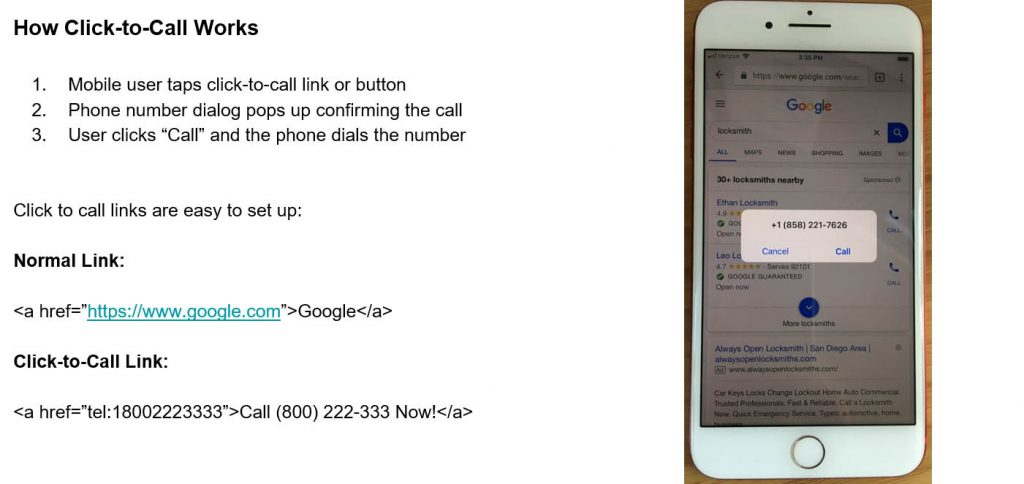
These are simple. Here’s what a standard link looks like in HTML. You just set your href to the URL you want the user to go to. A click to call link is very similar. But instead of the href, we’re going to T-E-L colon, the area code, with the country code and the full phone number. That’s it. Then when the user taps it or clicks it, they get one of these dialogues. They can initiate a phone call on the spot. This click-to-call link is what powers like 95% of the pay per call industry. It’s a potent invention. It works on landing pages. It works in email. It works just about everywhere on a mobile device. It’s super, super powerful.
Types of Online Advertising
For search, you have Google AdWords. They have their own call only ad platform, also ad extensions and site links where you can put phone numbers. Search is a really powerful way to run calls because you can catch people right at the moment when they need something, like towing, or plumbing or an emergency happens, or they’re looking for something, or whatever. It’s very intent-based. If you’re going to run search, it’s very intent-based.
Social, on the other hand, is not intent-based. You’re essentially interrupting someone from what they’re currently doing, to get them to take another action. You have to inspire them. You have to sell them on what your product is, and why they need it. It’s a different animal and a different approach. Native advertising is very similar to social. I would assert that if you can make your campaign work on social, you can make it work on native because it’s also interruption-based marketing. You can target people by what they’re interested in. You can tell them a story which makes them emotional, and then gets them to buy your products.
Some of the less popular areas I see people winning in pay per call, and they’re probably not too happy with me that I’m going to talk about this, are push notifications. You can send mobile push notifications to people with a click-to-call link in the push notification, which is super, super powerful. Then there’s email. Email is fantastic because it’s the highest value of any user. But also, if you use a click-to-call campaign in an email, guess what? You don’t need a link. If there’s no link in your email, it’s a lot easier to get it in someone’s inbox. On iPhones, you can even put phone numbers in the subject line so that when someone opens the email, they can click on the phone number right in the subject line automatically, and initiate a phone call. Email is great for pay per call. Not a ton of people are doing it, but the ones that are, are seeing huge CPMs compared that what they’re typically used to on any other type of advertisement with a link in it. We’ll jump in further on that.
You can also make money on pay per call with contextual. Which, people are like, “What? You can?” Yeah, you can. You can do it on pop and domain redirect. It works on a whole bunch of different verticals, and we’ll talk more about that. Also, SEO. You can build all sorts of properties, drive traffic to those properties organically that have phone numbers on them. Track where the traffic’s coming from. Optimize your sites. Sell off a lot of calls. Some of the most successful people I know in pay per call make a lot of money off SEO.
Paid Search Advertising for Pay Per Call
Search is amazing. It’s where most people start for pay per call. It’s where some people live entirely. They only work in search. It may be the easiest way to get started, depending. With Google’s new call only ads, it’s a really powerful way to target just about any industry. Search is terrific because it’s highly targeted. You can target people based on what they’re searching for. You can target them by intent.
For a lot of pay per call campaigns, especially home service, people need something. Intent-based marketing is a straightforward way to get started. For instance, they may search, “I need a plumber,” or, “Plumbers near me.” That is an effortless way to get started. Or, better yet, you get more creative. “My kitchen is flooding.” So with search, you’re gonna have a bunch of keywords like “plumbers near me” that are competitive. Then you’re gonna have almost an endless list of keywords like “my kitchen is flooding” where there’s gonna be a lot less competition. It’s your job to root those out and find your best angles to work with these campaigns.
Mobile call only advertisements are the way to go with search. If you’re going to run search, Google is where I would start. I would start with mobile call-only advertisements because it’s only going to target people on their mobile phone. You’re only going to be running ads that, when clicked, initiate a phone call. They do not give the user the option to go to a landing page. They can only dial the phone. That’s a great way to get started. Also, Google has excellent control over your budget, your CPA, and your hours of operation, which is super crucial for pay per call. I highly recommend that if you’re going to get started, you learn how to do Google’s call only ads. You start with search traffic.
You’re also going to need a big list of negative keywords. We’ll include some of those in the course. You should always ask your networks for lists of their negative keywords for every single campaign. Because sometimes it’s more important to have a good negative keyword list than it is to find positive keywords. Because sometimes people are searching for videos and all sorts of things that don’t apply to your campaign. You want to block those things so that you only show your ads to people who are interested in what you’re trying to sell at any given period.
With Google’s new call only advertising, I see a lot of people getting their accounts banned. Then I ask those people what the rules are, and ask them to explain them to me. Nine times out of ten, they don’t know what the rules are, so they get their account banned. Google’s new call only advertising requirements are pretty darned simple. You need a legal DBA, which means you’re “doing business as.” You need an LLC or even just a DBA in the United States. You don’t even need a company. You can just hit up your county, not your state, and file a DBA form. Most counties in the United States will let you file a DBA for 10, 25 dollars. It doesn’t even matter. You need one from wherever. Most of the time, Google’s not even going to ask you for a copy of that. But if you ever run into any issues, you want to make sure you have it.
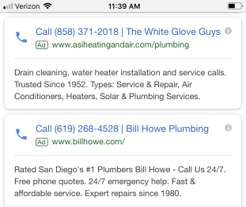
Whatever you do for that legal DBA, it should be the domain name or the company that you’re advertising as. If you look at these examples above, you can see that you have ASI heating and air, and Bill Howe Plumbing. You wanna do your DBA, whatever you’re going to use your domain name as, or whatever you’re going to call your company, so that under company name you can put, in the ad, what your company name is, it matches your DBA, and if you ever run into an issue, you can send Google a copy of that paperwork by contacting them. You can call them. You can email their support people. They’re accommodating. I don’t think people realize that.
Google also requires that you disclose to the customer on the phone who you are. You can use an IVR, inside a Ringba, with text-to-speech, or a recording, that announces the business name. “Thank you for calling Bill Hao Plumbing. We’ll connect you with an agent. Please hold. It will only be a moment.” Or whatever you want to say. Then you’ve done your disclosure. That way, if Google calls the phone number, they’re going to see that the business name in the ad matches the disclosure on the phone and that you’re most likely following all the rules. Then your account will not get banned. It’s that easy.
Paid Search: Google Ads
Let’s say for a moment that you’re going to start with Google Ads or Ad Center. We know that this is entirely intent-driven. What I’m going to recommend to you is that you use single keyword ad sets or a couple of keywords. What I mean by that is, if you’re gonna do “plumber,” you’re gonna do “plumbers near me,” or you’re gonna do “plumbers around me.” Then you’re going to target the ad to the specific keyword. Or “Los Vegas plumber.” Or “Los Angeles plumber.” You’re going to put the keyword inside of the advertisement. By placing the keyword that was searched inside of the ad, it makes it super relevant to the person that’s searching. Then you can optimize your advertisements by specific keywords.
What you can also do is generate a bunch of phone numbers with Ringba, and use a different one for each ad set. Then dynamically pass the phone number to your landing page for verification, so that you can tell which ad sets are generating back end conversions inside of Ringba, and you can understand how to optimize your calls better. Now, inside of every single advertisement you’re going to do, you need to make sure that you have a CTA. I understand that’s super simple. I see a lot of ads that don’t have it. You need to be saying, “Call now,” “Call for service now,” “Call us now.” Whatever, but you need your CTA. It has to be there.
Once you’ve got your campaign moving, you have to optimize for negative keywords. You have to pay attention to what keywords are causing phone calls that are causing you problems. Now, the only way you’re going to learn that is by communicating with your network or your buyer or listening to your phone calls. If you don’t have third-party tracking, you can listen to the phone calls; you may burn your network relationship if you don’t have negative keywords in place. If you send them 50 phone calls, a few convert, and they’re all trash, they may ban you and say the quality‘s bad. You need to understand what’s happening on your phone calls, and what the actual intent of the caller is so that you can block all the keywords that are problematic for your campaign.
You want to think about non-obvious search terms. If it’s a legal campaign, you don’t necessarily only wanna bid on the obvious keywords, like “find a lawyer.” Those are going to be super expensive. What you need to do is think about keywords that other people aren’t thinking about, like “court in Poughkeepsie.” “Poughkeepsie court”? Probably because they have a court date. What do they need? A lawyer. You need to think about what people are searching for that also need what you’re offering, and there’s going to be almost no competition when you find those pockets of gold. I’ve made a lot of money, I’m talking millions of dollars, by using AdWords and thinking about what people were searching for that was entirely, seemingly unrelated from the main keywords, and almost has no competition. It’s just complete win at a little cost. The Holy Grail, essentially.
A great way to do that is to get a whiteboard and start writing down keywords. Then thinking about where people are in life, what they’re doing when they need those products and services, and then coming up with different angles that you can promote. “Heading to court? Need a lawyer? Call us now. We’ll connect you with a lawyer.” Okay, great. “Heading to the Poughkeepsie Circuit Court? You need a lawyer. Call us now.” It’s incredible to me that I never see advertisements like this when I search for random stuff in Google, because most marketers aren’t creative enough to come up with these different angles, and that’s where you’re going to find tremendous success.
Paid Social Advertising for Pay Per Call
Social advertising for pay per call is the largest untapped resource the industry hasn’t exploited yet. We have quite a few clients that are doing well on social platforms, all different types of social platforms. The only difference between them and most players in pay per call is that these guys work their butts off, which means they’re testing thousands of ads. That’s the answer to how do you do it? You understand that you’re going to lose some money, and then you test, test, test, test, test.
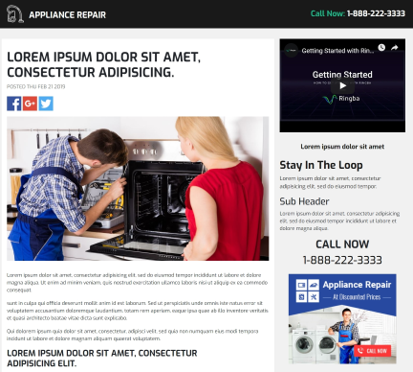
Social advertising for pay per call requires more of a storytelling format. Like a blog, or a news-type outlet. The example above is a fully customizable advertorial package that we released last year. You’re welcome to download it. It has like 200 verticals in it. You can create your own advertorial that works on mobile and desktop, and run that on social. I have yet to see any social pay per call that doesn’t use an advertorial. I highly recommend that you use an advertorial to do it. It works like any other campaign. You create a nice story, you put good imagery in there, testimonials, and then you have lots of calls to action, everything you need. That is entirely customizable. It has forms on it too. Take a look at the package. It’s nice. We put it together for you guys so that you don’t have to do a ton of work getting this stuff set up.
Social is probably going to require long-form sales form copy, which means it takes longer to set up. You’re going to have to make sure that your ads communicate the same type of message that is delivered on your long form sales copy on your landing page. You’re also going to need to make sure that you’re landing page is optimized for mobile. That is why a lot of people fail with social pay per call, as well. They’re not testing their landing pages on lots of different mobile devices to make sure they work. What you need to do is get a service, or buy a bunch of different types of phones. Then test the heck out of your landing page to make sure it works on every other kind of device?
This is super important because if there’s something off on a Samsung Galaxy phone, or on an Android device, or an iPhone device, and you’re targeting people with those devices, you’re going to have a real hard time getting conversions when your website’s broken. You need to test it. You also need to create a story that resonates with the user. I don’t necessarily think that a plumbing campaign is going to work that well on social. The hook isn’t there. When people have a plumbing issue that they need to solve immediately, they’re probably going to search on Google for it. You’re not going to catch them at that moment on Facebook. Just like if you need to run a towing campaign, or you want to run a towing campaign, social’s probably not a good spot for that. Because people aren’t sitting around searching Facebook for a tow truck driver when they’re stuck on the side of the road. They’re Googling what they need, and then calling someone immediately. You have to think about different types of campaigns that people need that they may not be addressed at any particular time, that they have to take care of though. I’m not going to suggest anything specific. But think about what you see on Facebook, and what types of campaigns work. It’s an interruption-based campaign. It’s not an intent-based campaign.
You’re going to wanna make sure that there are calls to action throughout the entire page, just like you can see in our example. We got one in the upper right that pins and sticks with the user as they go down. You got one on the right rail. If you wanna do a nice job, you can pin a click-to-call button on the bottom of the device, so no matter where they scroll on the page, there’s the “call now” button that’s pinned to the bottom of the page. All of this takes a bunch of work. But you have to optimize for the phone call, not any other type of campaign. That’s another reason why people are failing. They’re not spending a lot of time optimizing their landing page to make sure that phone number is always in front of the user, regardless of what they’re reading.
I believe that the most crucial thing about optimizing your landing page for pay per call is making sure that no matter what, the phone number for the campaign is always visible, or a click-to-call button. Sometimes, the user doesn’t understand that it’s going to be a phone call. That’s why you need to put an icon on your button, just like that one on the banner in the lower right of the example that says “call now.” It’s got a little phone there, so the user knows that they’re going to be calling if they click that. You have to tell people a story about what’s going on visually, and then optimize for it. That’s a little bit different of a skill set that most marketers haven’t tackled, because pay per call is a different animal. But if you spend a lot of time optimizing for the phone call button on mobile, you’re going to see much better conversion rates on your campaign.
Native Advertising for Pay Per Call
Native advertising for pay per call is almost uncharted territory. I know a few people doing it. Maybe 10 or 15 people, and they’re doing well with it. But again, most people are stuck in the mindset of Google. They’re not there yet. This is a big opportunity. I know a bunch of call centers that are also using native to generate phone calls. If the back end call center is doing it, that means it’s a massive opportunity of affiliates. A simple rule of thumb here, if it works on social, it will most likely work on native because it’s not an intent-based campaign. You have to figure out what ad combinations get your clicks, and then tweak and tune your landing page for native, to make it a little bit different, or maybe not different at all. This is going to be a multi-step optimization process for you. Whereas with Google, you’re only optimizing for keywords and clicks and calls. You’re not messing with the landing page, for the most part. With native, like social, you’re going to be doing your ads, your images, and your landing pages, and optimizing what websites the ads get placed on. It’s going to be a multi-step process. But there’s a tremendous amount of traffic available that you can take advantage of.

You can see here the examples that we have: NerdWallet, EnergySage. These are both campaigns that have pay per call components in them. You can find pay per call campaigns that are just like these, and then run them on native. A great way to find campaigns for pay per call with native is to look around at a bunch of sites and see what complementary companies are advertising none pay per call campaigns. Then find yourself a credit card and a solar pay per call campaign, and you’re good. For native, it’s going to require a long form sales copy that tells stories and elicits emotions. You’re probably going to need to use an advertorial. See our advertorial package. That’s what you want to do to win with native.
This is going to be more of an emotion-driven marketing campaign. You’re going to need to get people emotional to get them to buy. You’re going to need to make them feel something. It is not intent. You’re probably not going to find someone who needs their car towed on a native campaign at that very moment because the intent isn’t there, and it’s a campaign that requires intent. You need to think about what type of campaigns can be interruption versus intent. The interruption ones are going to do much better on native advertising. You’re going to wanna capture the users’ curiosity. You’re going to wanna scare them. You’re going to wanna make them feel something. Doesn’t matter what emotion it is. It’s just whatever applies to the campaign. See my lesson on Generating Emotions and Writing Sales Copy. You’re going to need that when you write your long form.
I highly recommend that you use third-party trust. That’s testimonials. That’s video testimonials, reviews, text-in-video if you can. You’re going to wanna put tons of calls to action all over this thing. Again, optimize the heck out of it for mobile because you’re going to want to target mobile and desktop separately on native so that you can optimize your landing page for each type of user.
Mobile Push Advertising for Pay Per Call
Mobile push advertising for pay per call is something that’s just starting to happen right now. I’m very excited about that. We’re currently integrating our platform with a couple of different push providers, to provide you detailed optimization. But for the time being, if your provider cannot integrate with Ringba on a number pool basis, it’s going to work better for general campaigns because it’s going to be a little bit harder for you to track. You’re going to necessarily have to use an individual phone number for each publisher so that you can see which is generating calls.
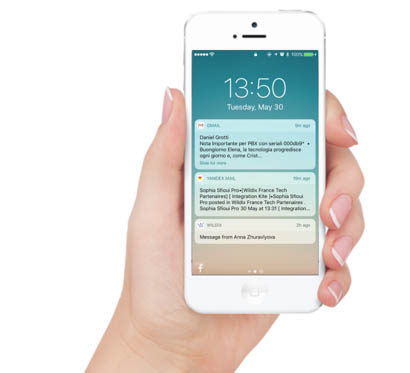
If you look over at the example above, you can see some push notifications. Essentially, what you’re buying is one of these. You can put a click-to-call link in it, so when people tap it, it initiates a phone call right there. Now, these work well for travel campaigns because people are always interested in travel, or other general audience campaigns that apply to large groups of the population. This is probably not best for an intent-based campaign because you don’t know the user’s state of mind when they receive the push notification. You need to run a campaign that’s an interruption-based campaign and get them to call. Or you can drive them straight to a landing page, which then tells a story, and then that gets them to call.
There are two ways to approach mobile push advertising. You can put a click-to-call link right in the notification, or you can use a standard link to drive a user to a landing page that’s designed for pay per call. But either way, push notifications are pretty new to pay per call. I only know a few people doing this right now, but the ones that are doing a ton of volume because there’s an almost endless supply of push notifications. If you can crack push notifications, you can do a seriously large amount of volume. But there’s going to be a lot of panning for gold involved. If you can’t afford to lose $500, I don’t necessarily recommend that you start with push notifications because it’s going to take a lot of testing. Not a lot of people have figured out this game yet. There’s not a lot of information out there for you to read about it, which means that the information you’re going to get comes from testing.
If I were doing pay per call, I would be all over this because most people haven’t cracked it yet. Once I figure it out, it’s hard to find push notification examples on the internet. It’s highly likely that no one’s going to be able to compete with me or take my campaign for an extended period. That is an exciting opportunity for those of you that are interested in testing something that most people haven’t touched yet. I will posit, by the end of 2019, we’ll see a considerable amount of pay per call coming from push notifications.
Email Advertising for Pay Per Call
Email advertising for pay per call is something that I love. I know a bunch of emailers that are doing very, very well with this. They’re doing very well with it and being very quiet and coy about it. Because they make a lot of money off pay per call for email. Email has the highest conversion rate of any digital ad. It always has. It looks like, at this point of time, it’s going to for a very long time. It’s the highest value user. You can get directly to the exact type of person you want. You can segment those people well. If you have email lists, and you know who they are, what their demographics are, you can custom tailor campaigns to the exact segment of users that you have on your list. That can get you a significant ROI. There are no links inside emails. They’re super high deliverability. If you’re doing bulk email, you’re going to get higher deliverability from it, which is something that bulk emailers look forward to.
You can use high brow email delivery services like MailChimp, Aweber, Constant Contact, ActiveCampaign, ConvertKit. You name it; you can use it. Most of these companies do now allow affiliate marketing campaigns in their emails. They only monitor that by the type of link that’s in there. But they don’t monitor for pay per call campaigns because it’s a phone number. It doesn’t scare them at all because it does not affect deliverability. You can build lists of people and email them using the basically guaranteed inbox delivery high brow services, put phone numbers in those links, and you can smash pay per call campaigns.
If you have data, you can export your clickers, import it into Aweber or whatever, run pay per call campaigns to it, and you’re going to see high deliverability and high ROI. Now, if you don’t have email data, you can build your lists, you can build those lists off of Facebook lead ads. Those are awesome. You can create your own One Field campaigns. You can buy data. You can rent other people’s lists. You can get emailers to drop your offers. You can find buyers. You can find brokered offers. Whatever you want to put in the email, it doesn’t matter because it’s just a phone number. It doesn’t matter whether it’s going through a network, doesn’t matter whether it’s going through a broker. It doesn’t matter if it’s a direct buyer, you can run whatever you want in the email campaign, with the best email delivery services in the world. Most people are not aware of this.
Another way you can do pay per call is explicitly run your lead gen on Facebook using lead ads. Email people pay per call offers. You probably see your return on investment from the get-go, and then you still own that user’s information. You can re-upload those email addresses, when they call, back to Facebook, and create more segments, lookalike audiences, and then perpetuate the cycle.
Once you have the winning combination, and you know what works, that’s when you want to find other mailers or mailing networks. You’re mostly just gonna come to them and be like, “Hey, I got a DME offer. I got a Social Security offer. This works well in these demographic groups. I give you the phone number, the creative, you mail it. Here’s your sub-account. Ringba. Track your revenue.” You have your own offer now. If you can find a few offers and a few networks and create around in plan that load balances, and then test email through lead generation, once you figure out what works, you can just take that to a bunch of mailers, you have your offer, and then other people can use what you’ve learned and do the work for you. Email is fantastic for pay per call.
Contextual Traffic for Pay Per Call
Contextual traffic for pay per call is a fascinating animal. By contextual traffic, I mostly mean created inventory. Inventory that’s generated through JavaScript injection, pop-ups, desktop software, applications, mobile apps, whatever. It’s contextual because we know what the user is searching for, or what website they’re on at any given moment. We can target them by that information. It’s very similar to search, except in most cases, you can target not only keyword but domains. You want to target intent, just like search and competitors. If you’re running a car insurance offer, you can actually target Allstate, Liberty Mutual, Geico, all the major brands, all the major blogs, thousands of websites about car insurance, and then pop up your advertisement on someone’s computer right in front of them while they’re actually engaging in that product or service.
A lot of people are gonna say, “You’re crazy. You’re gonna do pop-ups for pay per call for auto insurance?” Hell, yeah. I’m going to do it for every single vertical. It’s super cheap to test. It’s super targeted. I’m going to do it by domain. I’m going to do it by keyword. Then I’m going to optimize the heck out of it by publisher. If you want help with this, and you haven’t worked with contextual traffic before, let your Ringba representative know, and they’ll introduce you to someone at these contextual networks, who will help walk you through setting up your campaign.
One of the exciting things about contextual traffic that’s unlike any other type of traffic is the inventory is created. That means that your website is being loaded inside of a third party browser, or being popped under, or over, or whatever. It’s going to have a specific browser type and aspect ratio. What most people don’t realize about contextual traffic, and why they fail at it is they don’t talk to their account managers and realize, “Oh, the pop-ups gonna be 720-by-640.” And so when that pop happens, their page is for a much bigger screen. Most of it’s cut off, and the user can’t see it, or whatever. You need to talk to your rep at the contextual network and understand what the size of the browser is so that you can customize your landing page to the actual viewing area of the advertisement that gets shown to the user. Then you’re going to make specific landing pages for each provider based on that information they give you. It requires a little bit more work, but when you do it correctly, you can see a massive return on investment.
Audio and video on your landing pages also work very well. You can put a full video infomercial on there. Whatever you want to do. But that audio helps get people engaged on the spot about your product and service. If they’re on Geico.com and they get pop-under, they may not see it for 20 minutes. But if you have video or audio on there, and it starts playing in the background, and it’s super customized — I mean, I like going all the way down to the domain level. I get my pop-under in there, and it’s like, “Hey, user. I see you’re on Geico.com. We can beat their prices. Blah, blah, blah.” And you’re going to have to make a bunch of recordings. But you can get highly targeted. Then you’re going to see your conversion rate go through the roof. You just put click-to-call links on there, or the phone number right on the landing page. They pick up and call, and you can catch people right in the middle of filling out a lead, or right in the middle of their intent, in their head. Then you can use it to make some cheap conversations for pay per call.
That is going to require a ton of optimization again. A ton of landing page tweaking. A ton of communication with your account manager. You’re probably going to lose some money doing it. I wouldn’t recommend doing this if you can’t afford to lose 500 bucks. If you can, and you’re willing to put the effort in, you can make a lot of money with contextual traffic on pay per call.
SEO and Organic Traffic for Pay Per Call
All the general rules of thumb for SEO apply. Content is king. You want to use useful knowledge that drives people into a funnel. You do not want to use some crappy outsourced $5 articles from another country that don’t tell anybody anything, that you’re trying to use to get traffic to your page. You’re going to need to hire native speaking writers. Then you’re going to need to hire people who can write useful content and explain things to people. You want to use super high-value content so that users will engage with it, trust you, and then pick up the phone and call.
For SEO, you’re going to have an older demographic, and typically you’re going to need to detect if they’re on an iPad. If they’re on an iPad, it’s like the Holy Grail user. It’s like my mom. She’s 66 years old or whatever. She’s on her iPad at home surfing the internet because the screen’s bigger. You’re going to wanna create long-form content that Google will chew up, but also helps users learn and accomplish something. You need to convince them that you’re an authority, so they pick up the phone.
Once you have some content, if you have a bunch of different sites, you can tell writers to rewrite your articles from scratch, and then use it on multiple sites. Or, you can show writers articles on other people’s websites that are good, and tell them, “I want this same article, entirely unique. Most of the same content. Sprinkle in some of your own unique stuff.” And they’re going to be able to turn out that content much faster. You should ask them for discounts because it’s a rewrite, as opposed to them researching all the content on their own.
If you’re going to do SEO, and you’re going to invest in the content, you need to create a brand. You want to focus on longtails and micro niches, or something that doesn’t have any competition in Google already. If you can, you want exact match keywords. Always get a dot-com. “.io” is cool, if you’re in Silicon Valley. But no one trusts “.io.” It’s dumb. Get your dot-com. If you have to, buy it aftermarket on Sedo. Do whatever you have to do to get a unique, memorable domain name. It’s still possible to buy a great domain name for nine dollars, guys. Ringba.com, I purchased for nine dollars. It took me hours to find it. But it was worth it to take that time, and then I get a great brand name.
Invest in solid design logos and page speed optimization. You need a logo that looks great. You need a logo that is clean and professional. You need a website layout that’s optimized, looks clean and professional. Then you need to optimize it for low time. If you’re going to use WordPress, don’t cheap out and find the most affordable contractor you can on Upwork. Find an excellent contractor who can optimize for mobile and for load time, so that Google likes your site, and then will send it more traffic.
Test everything you’re going to do on all devices. CrossBrowserTesting.com is what we use at Ringba to test our stuff on like 55 different mobile devices. Use it. It’s worth the 50 bucks a month so that you can make sure that all your pages work in all browsers, on all devices, which means you’ll get the maximum conversion rate. I would venture to guess that 90-plus percent of affiliates — Yeah, that bad. 90-plus percent of affiliates are not using something like Cross Browser Testing to test their landing pages. Almost 100% of new ones aren’t, and that’s why most of them wash out. They probably got errors across all sorts of devices, and then people can’t use the pages. Guess what. Then they don’t call; they don’t trust you, they don’t click the links. They don’t do anything.
First and foremost, you guys need to make sure your stuff works. Otherwise, it’s not going to convert. That’s like the bare minimum thing you need to do. If you don’t have 15 phones and computers to test them, spend the money to use a service like Cross Browser Testing, even if you cancel it after the first 30 days.
With SEO, you need to build links. Guys, be careful with shady link building services. They’re shady for a reason. If they promise the world to you, it’s probably not going to work. Buying some links is okay in some circumstances, but you want to be careful. Manual outreach is by far the most effective. It’s almost the most work. It’s also the most long term. It’s also going to deliver you the most results. You need to decide what your goals are. SEO is always a long term play. You’re never going to see zero to hero overnight. It can take months or years, okay, to win for SEO. That’s why I think buying a great brand name, something of value, a domain that’s been around for a long time, is super important – or even acquiring some blogs that already exist on sites like Flippa. Maybe you spend a couple of thousand dollars. The sites have been around a few years. They’re already indexed and already have some backlinks. It gives you a leg up, and a head start. It all depends on how much money you have, what your background is, what your resources are. But you can find a ton of information about SEO on the internet. But I want you to know that it works for pay per call, and a lot of people do it.
Examples from Call-Only Google Ads
I wanna search “plumber.” “Plumber near me” is the best recommendation. That’s an intent-base keyword. People searching that need a plumber. Or just “plumber.” They need a plumber. Or “plumber San Diego.” “Plumber near …” where you’re at. Next, below that, it says, “plumber salary.” Well, if someone’s searching a plumber’s salary, they don’t need one. They may want to become one. That is an example of a negative keyword. “Salary”, “employment”, “job”. Anything relating to a job, when you’re looking for intent, you need to block. Below that, “putty.” Oh, people searching for things related to plumbing, that are tools. We want to black that. “Putty”, “tools”, “wrench”, “hammer”, “screwdriver”, et cetera, et cetera. You want to think about those type of keywords.
Then you take “plumber’s putty” or “plumber’s salary,” and you plug it into the Google keyword tool, and it gives you a list of similar keywords. Then you block all of those in the negative keywords, and you only get high intent calls. Once I searched for “plumber,” I got two Google call ads, three actually. You can see the local ones up top. Then a call only ad for Bill Hao below it. Then at the bottom of the page, I also have two more call only ads. Then below that, I have more related searches. You can see “local plumber near me,” “plumber near me Yelp,” “24-hour plumber”. The 24-hour one has high intent. Because that means it’s like three in the morning, and someone needs a plumber. Their toilet’s exploded or something. “Plumbers near me now.” Okay, that person’s got a severe problem. “Cheap plumber San Diego.” These are all intent based keyword.The ones that are looking for “Yelp,” or “reviews,” or “cheap,” theirs isn’t super serious. They’re comparison shopping, and so the intent’s different versus “plumbers near me now” or “24 hours plumbers”.
I’m going to put different keywords like that in different groups. For instance, for “24-hour plumbers near me”, or “plumber near me now,” or “plumber near me phone number,” I’m gonna put that in an ad that’s like, “San Diego Emergency Plumbers. Call Now for Immediate Plumbing Service.” “We’re here. You got an emergency? We’ll cover you.” Bam. They’re gonna be like, “Oh, exactly what I need.” Click. “Yelp reviews” or “cheap plumbers” I’m gonna put into another group that’s like, “Discount San Diego Plumbers. Find the Best Plumbers at the Best Prices by Calling One of Our Experts Now.” I’m going to address the intent of those specific callers in their ad group so that I can get a higher click-through rate.
That’s all you do. You create groups of related keywords. I would probably create maybe five different angles for a geographic area, so like San Diego. Then I’m going to replicate that into every major and minor city in the United States. I’m probably going to have 10,000 ad groups by the time I’m done. But I can run a massive highly targeted, highly profitable plumbing campaign by doing this. This is a breakdown of exactly how to do it. It’s not rocket science. The answer is out there, right in front of you. You need to Google around, see how it works, and then create lists. Plug it into the Google keyword tool, and it effectively gives you the answer to your problem. Then you test your campaign, load balance between multiple buyers on the back end, listen to all the calls, optimize, get direct buyers, scale your campaigns, and you’re making money.

